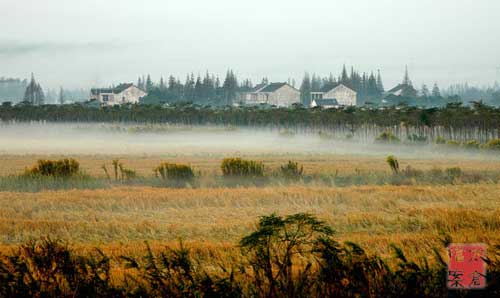Rural societies go urbanized in Taiang
Taicang's efforts in urban and rural integration have made headway in past years.
A total of 56,410 households on the countryside relocated to modern, integrated communities in Taicang, Jiangsu province in the past five years. The residence concentration reached 66.8 percent in rural households.
Housing designs took consideration of the relocated communities' needs. Heping Huayuan (Serene Garden) community has a 2,200-square-meter service center which houses an area for the elderly, a multi-function hall, and an early education facility.
Infrastructure construction and public services came along with the housing plans. All the administrative villages can now be reached by the smart bus system.
Cooperative medical insurance, endowment insurance, minimum living subsidies, and poverty aid are all available.
Ninety-nine percent of the rural workforce have joined endowment insurance (a pension project). Each rural elderly resident receives subsidies to make up for the absence of a pension system in the past.
Local healthcare units were integrated between towns and villages.
 |
| A village in Taicang.[Photo from TCDA.net.cn] |
Furthermore, rural net income averaged at 30,931 yuan in 2015, increasing by 13.65 percent annually from 2011. Total sustained income in villages grew from 85.63 million yuan in 2005 to 633 million yuan in 2014, with villages' average sustained income reaching 6.73 million yuan and at least half of the villages gained over 5 million yuan in sustained income.
During that period, 90 percent of industrial enterprises from the rural side congregated at industrial parks. 20,000 hectares of rural lands went into circulation, which made scale management possible. Eighty percent of rural lands are now under agricultural programs with the optimal size.
A total of 795 cooperative organizations were established in Taicang, allowing individual farmers to pool their expertise in farming and land rights.
About 330 farmers' co-ops were listed for prioritized aid from the city and the province, rewarding high potential in sustainable growth. The Shunjie fruit and vegetable farm in Huangjing town was awarded the reference site for family farms title. Collective farms also fared well, operating 13,300 hectares of land.
Fuqiao town founded the nation's first rural labor co-op–Huajin labor co-op. Huajin has been expanding its business scope. Its income has been rising and is expected to reach 27 million yuan in 2015.
The farmers of Huajin also saw steady rises in income. Their annual income averages between 30,000 yuan and 40,000 yuan, with the highest between 80,000 yuan and 90,000 yuan.
Employment was boosted while the integration of residences and industries taking place. 96 percent of the workforce leaving the rural areas took employment in urban areas and the employment rate at administrative villages reached 100 percent.
Edited by Andrew Ancheta















